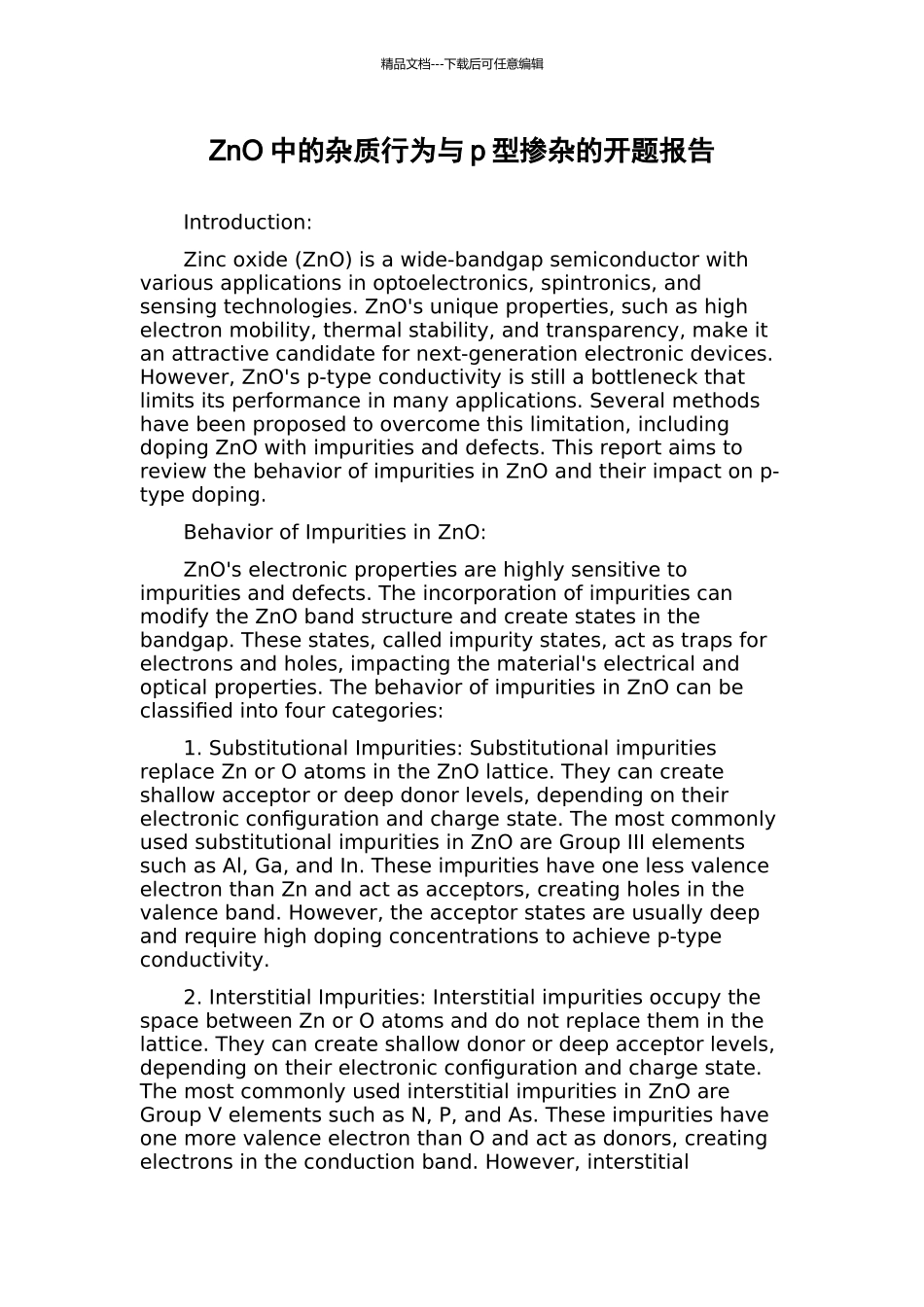精品文档---下载后可任意编辑ZnO 中的杂质行为与 p 型掺杂的开题报告Introduction:Zinc oxide (ZnO) is a wide-bandgap semiconductor with various applications in optoelectronics, spintronics, and sensing technologies. ZnO's unique properties, such as high electron mobility, thermal stability, and transparency, make it an attractive candidate for next-generation electronic devices. However, ZnO's p-type conductivity is still a bottleneck that limits its performance in many applications. Several methods have been proposed to overcome this limitation, including doping ZnO with impurities and defects. This report aims to review the behavior of impurities in ZnO and their impact on p-type doping.Behavior of Impurities in ZnO:ZnO's electronic properties are highly sensitive to impurities and defects. The incorporation of impurities can modify the ZnO band structure and create states in the bandgap. These states, called impurity states, act as traps for electrons and holes, impacting the material's electrical and optical properties. The behavior of impurities in ZnO can be classified into four categories:1. Substitutional Impurities: Substitutional impurities replace Zn or O atoms in the ZnO lattice. They can create shallow acceptor or deep donor levels, depending on their electronic configuration and charge state. The most commonly used substitutional impurities in ZnO are Group III elements such as Al, Ga, and In. These impurities have one less valence electron than Zn and act as acceptors, creating holes in the valence band. However, the acceptor states are usually deep and require high doping concentrations to achieve p-type conductivity.2. Interstitial Impurities: Interstitial impurities occupy the space between Zn or O atoms and do...


